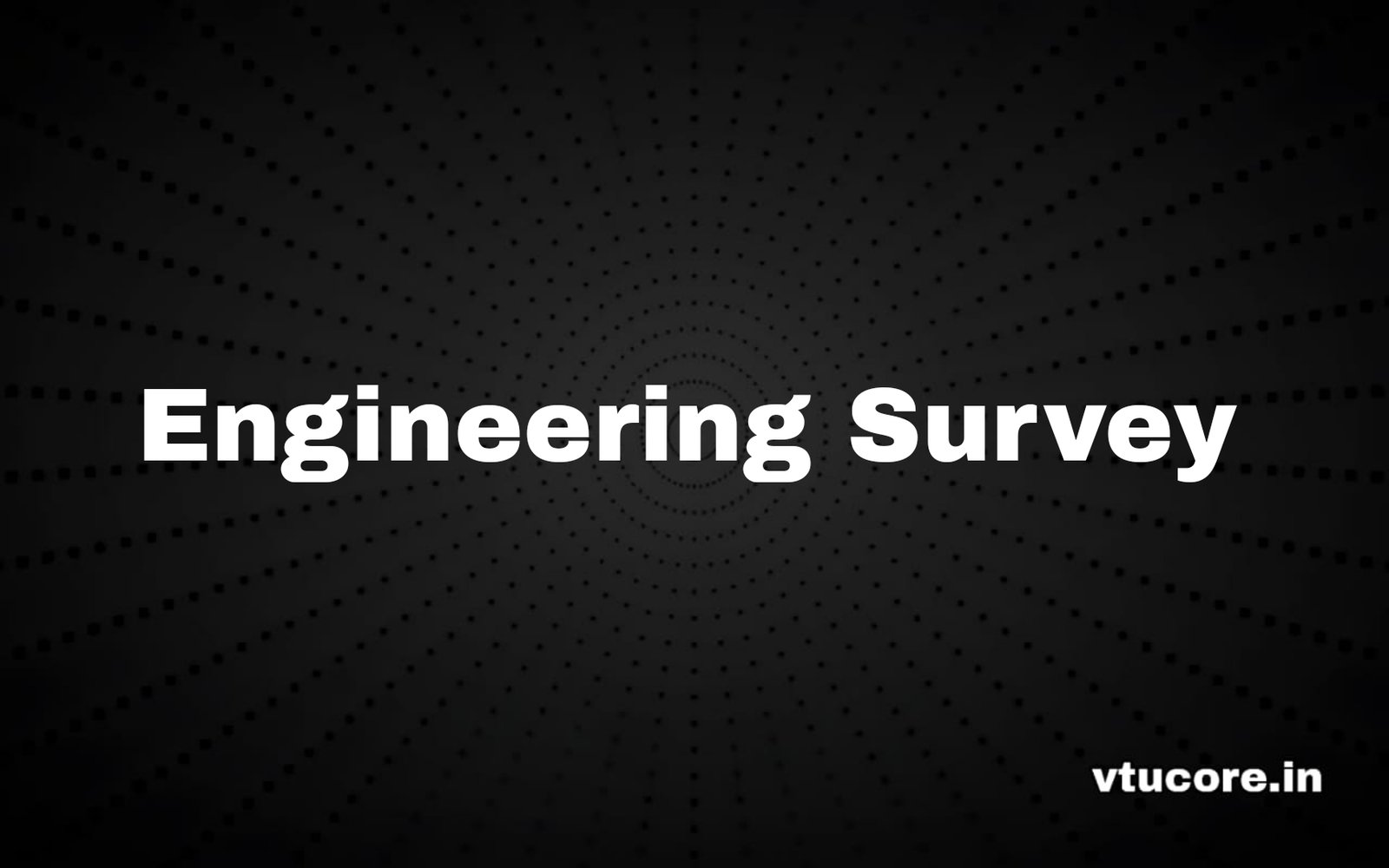Engineering Survey BCV302
Course Code: BCV302
Credits: 04
CIE Marks: 50
SEE Marks: 50
Total Marks: 100
Exam Hours: 03
Total Hours of Pedagogy: 40 hours Theory + 8-10 Lab slots
Teaching Hours/Weeks: [L:T:P:S] 3:0:2:0
Engineering surveying– Definition & importance of surveying for Civil Engineers. Surveying types- Control survey, Topographical surveying, Construction Survey, Cadastral survey, Hydrographic survey and Underground Survey. Surveying through the ages- Chain surveying, Compass surveying and Plane Table Surveying (concepts and limitations only). Measurement of Distance– Various types of tapes, Laser distance meter, Distance measuring wheel, Electronic Distance measurement, GPS.
Vertical Control– Concepts of various types of Datum – Mean Sea level, Bench marks – Temporary and Permanent. Levelling– Terms used in levelling, Setting up of Dumpy level. Differential levelling by plane of collimation method using Dumpy level. Theodolite Surveying– Terms used in Theodolite surveying. Setting up a Theodolite. Measurement of horizontal and vertical angles with Theodolite. Total Station Surveying– Features, parts, accessories and advantages of Total Station. Surveying with total station – Measurement of Horizontal angle, vertical angle, distance, slope, vertical distance, multiple angles with Total station. Using Total station for Area measurement and Volume calculation.
Contours/u>- Definition, terms used, characteristics of contours and applications of contours in civil engineering practice. Contouring using level, theodolite and total station. Plotting of contours in CAD. Longitudinal and cross sectioning – Definition, importance of L/S & C/S. L/S & C/S using level, theodolite and Total station. Plotting of L/S & C/S in CAD. Coordinate survey with Total station– Measurement of coordinates using total station. Creating Job files, importance of back sight data, coordinate data recording. Data transferring, data refinement and plotting in CAD.
Curves– Types of Curves- Application of curves in civil engineering. Setting out of Horizontal curve by Theodolite (Rankine’s method) and using Total Station. Components of Compound, Reverse curve. Transition Curve and Combined curve. Various types of vertical curves and its applications. Areas and Volumes– Methods of determining areas by trapezoidal and Simpsons’ rule. Measurement of volume by prismoidal and trapezoidal formula. Earthwork volume calculations from spot levels and from contour maps; Earthwork calculation in Embankments. Construction Surveying– Setting out works using Total Station, Setting out buildings by Centre line method.
GPS Surveying– Introduction. Overview of GPS system- space, control and user segments. Reference co- ordinate systems. Absolute and Differential positioning with GPS. Gagan system in India. Types of GPS Receivers. Engineering survey using Differential GPS. Surveying with Drone– Introduction, applications and advantages. Features of photogrammetric mapping method. Drone surveying requirements- Drone platform, Flight planning software, Sensor DGPS equipment and Image processing software. Types of drones and sensors. Process of drone surveying – flight planning, DGPS markers, capturing images, post processing of images using photogrammetry software and output maps. Application and uses of Remote sensing and GIS in engineering surveying.

